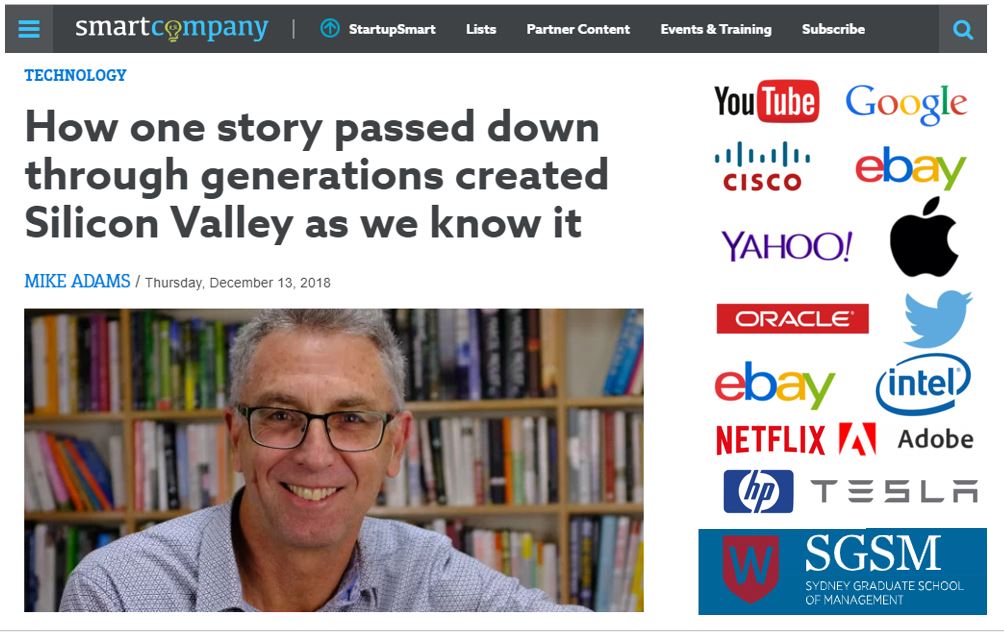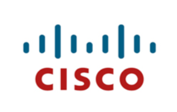(First published in SMART COMPANY - 13th December 2018)
In the early days of the Hewlett Packard Company (HP), co-founder Bill Hewlett came to work on a weekend and found the equipment storeroom locked. He smashed the door open with a fire axe and left a note on the door insisting it never be locked again because HP trusts its people. That’s a values story, and one of the most consequential stories in business.
How did Silicon Valley become the most productive centre for business on earth? What’s so special about a tiny strip of US west coast that it can generate more wealth than most countries? Part of the answer lies in the values espoused by that HP story.
History of the Valley
Hewlett Packard was founded in 1939 in Palo Alto, in the Santa Clara Valley south of San Francisco, well before the word ‘Silicon’ replaced ‘Santa Clara’. HP made electrical test equipment including one of the first commercial oscilloscopes. Their products became the tech equivalent of selling picks and shovels to Californian gold rush miners a hundred years earlier.
In 1956, William Shockley, the Nobel Prize-winning co-inventor of the electronic transistor, moved from New Jersey to Mountain View, California to start Shockley Semiconductor Laboratory and to live closer to his ailing mother in rural Palo Alto. Shockley’s company was the first to commercialise silicon transistors.
A better scientist than he was a people manager, Shockley’s management style was described as domineering and paranoid. In 1957 a group of his staff, the so-called ‘Traitorous Eight’, left to found Fairchild Semiconductor and Shockley’s company failed.
Fairchild was the original silicon chip success story and its founders went on to start more than 20 ‘Fairchildren’, including Intel, AMD and National Semi-conductor. And the Santa Clara Valley became Silicon Valley.
Silicon chips powered the computer age which in turn spawned the software industry. Today the Valley is home to tech giants Apple, Google, Facebook, Cisco and Tesla. Apple co-founder Steve Wozniak first met a 16-year old Steve Jobs when they were working at HP, by the way.
Managing creativity
In the years following World War II, command and control management prevailed. Workers clocked on and off each day and the manager’s role was to ensure compliance of workers that could not be trusted. HP was one of the first companies to appreciate you could not command creativity or control worker motivation. The founder of modern management Peter Drucker coined the term ‘knowledge worker’ in 1959 to describe ‘non-routine’ problem-solving that requires a combination of thinking modes.
The management style at HP was eventually codified in a pamphlet in 1975. ‘The HP way’ described the way HP people should treat each other, their customers and their partners: belief in people, freedom, respect, dignity, individual self-esteem, recognition, sense of achievement, participation, security, permanence, development of people, personal worry protection (insurance), informality, enthusiasm, shared benefits and responsibility were all featured. It’s important to recognise the stories came first, and then the document.
Forty years later, a 2014 survey by Accenture compared attitudes to work and success of 600 Silicon Valley workers to workers in mainstream America. Difference factors were grouped in ambiguous value-pairs with Valley workers being more laid back yet more ready for action, more committed yet more independent, more competitive yet more cooperative, more pragmatic yet more optimistic and more extrinsically motivated and yet more intrinsically fulfilled.
Stories create the values
But company and industry values cannot be merely mandated. Values must be demonstrated. Leaders are watched closely and the stories of when they surprise us travel like wildfire. A story that shows how a leader behaves when tested is worth more than any number of corporate values statements because employees and customers are influenced by what leaders do, not what they say or write.
Taglines and mission statements mean nothing. A true story means everything. When a leader demonstrates the values of their company through storyable action — we call that story triggering — those values become part of company lore and employees and customers follow.
It’s not an overstatement to say that the fire-axe story helped create HP, one of the greatest companies of the 20th century, which in turn spawned the technology powerhouse of Silicon Valley.














